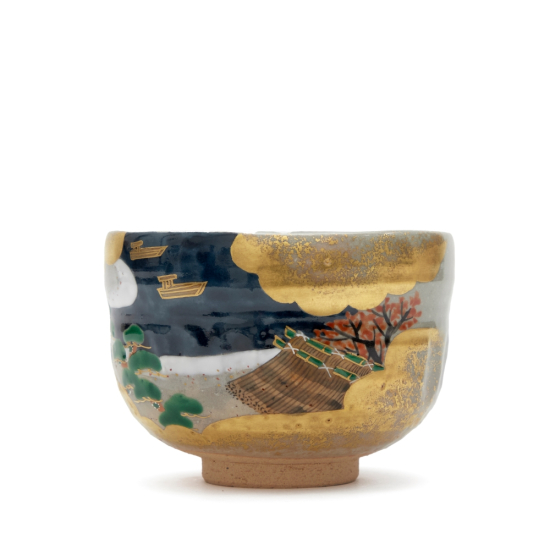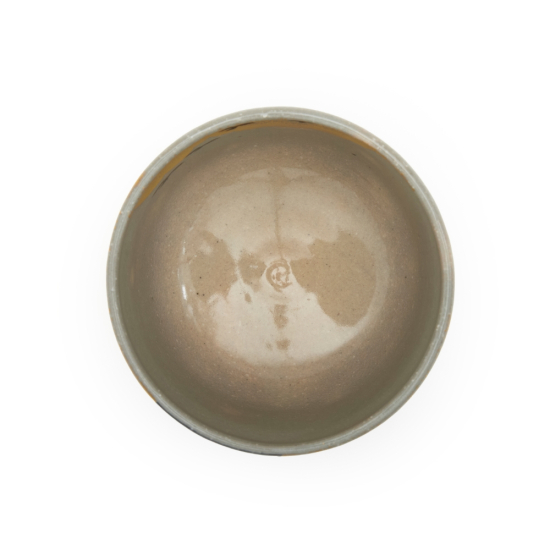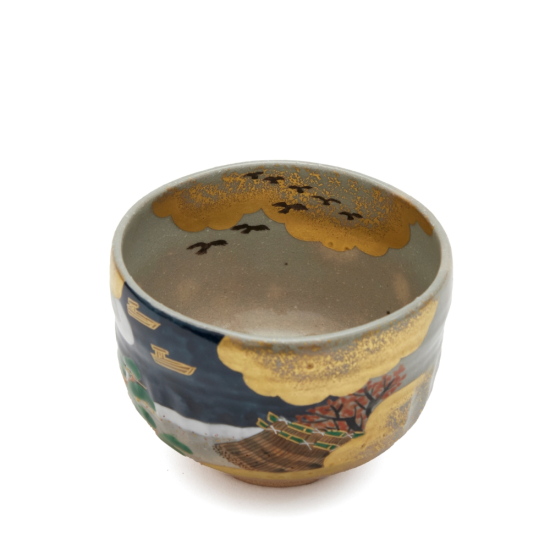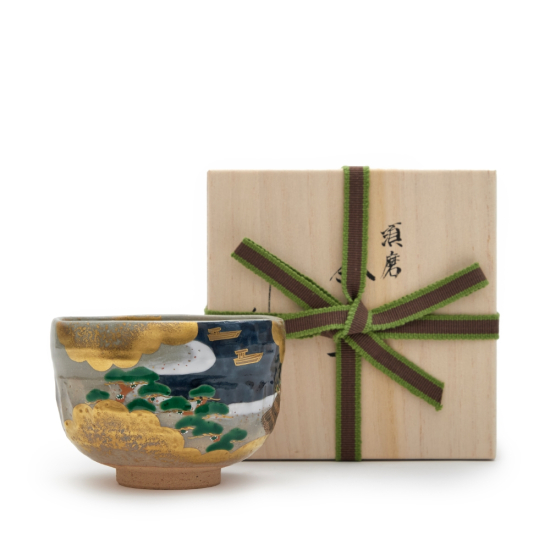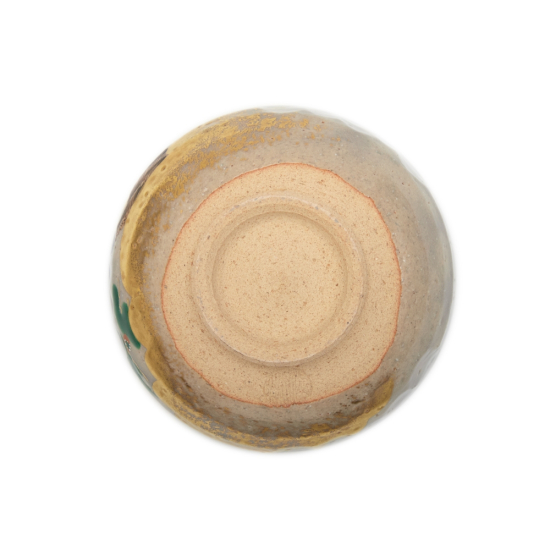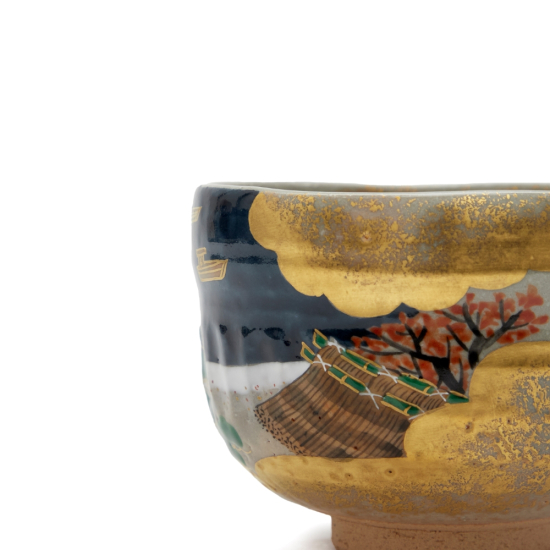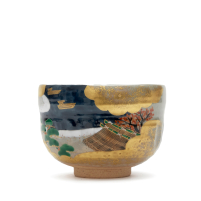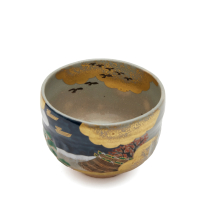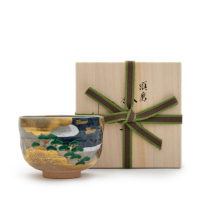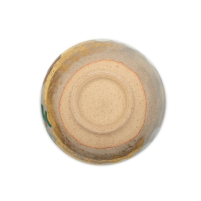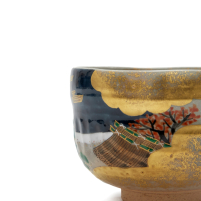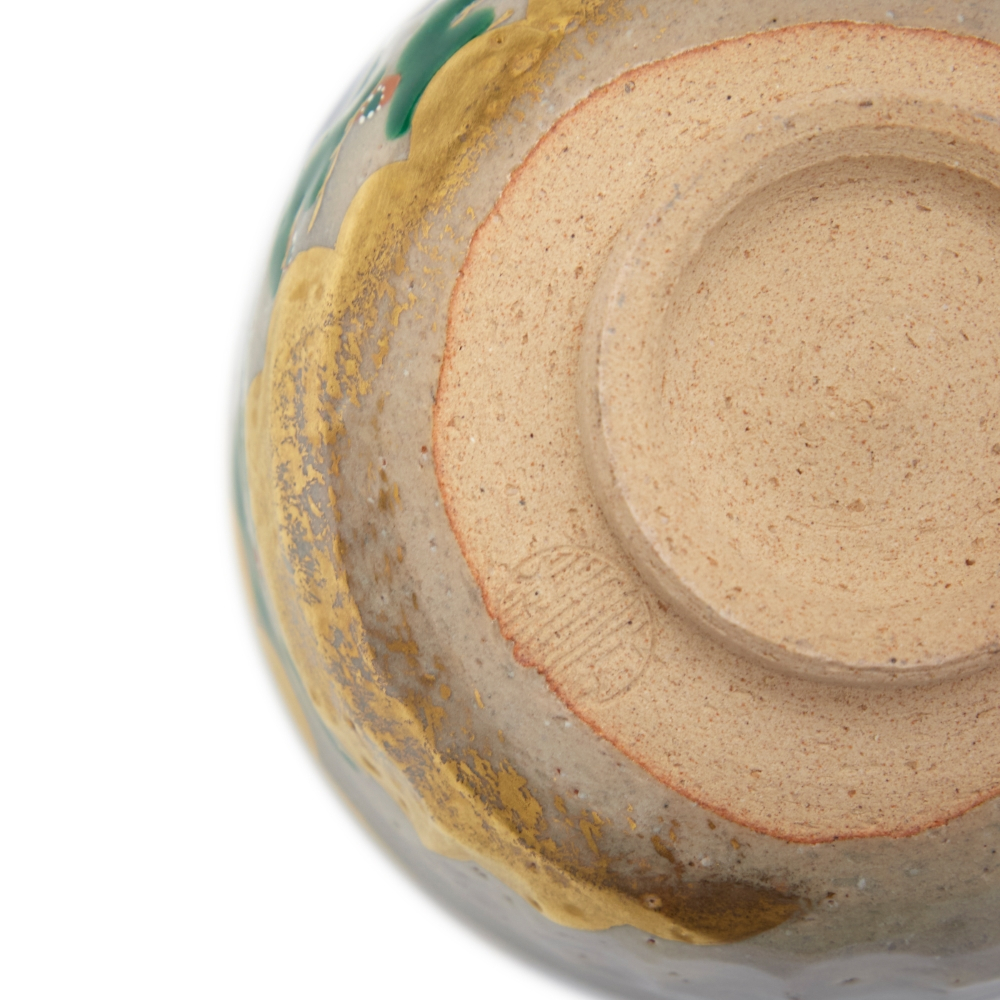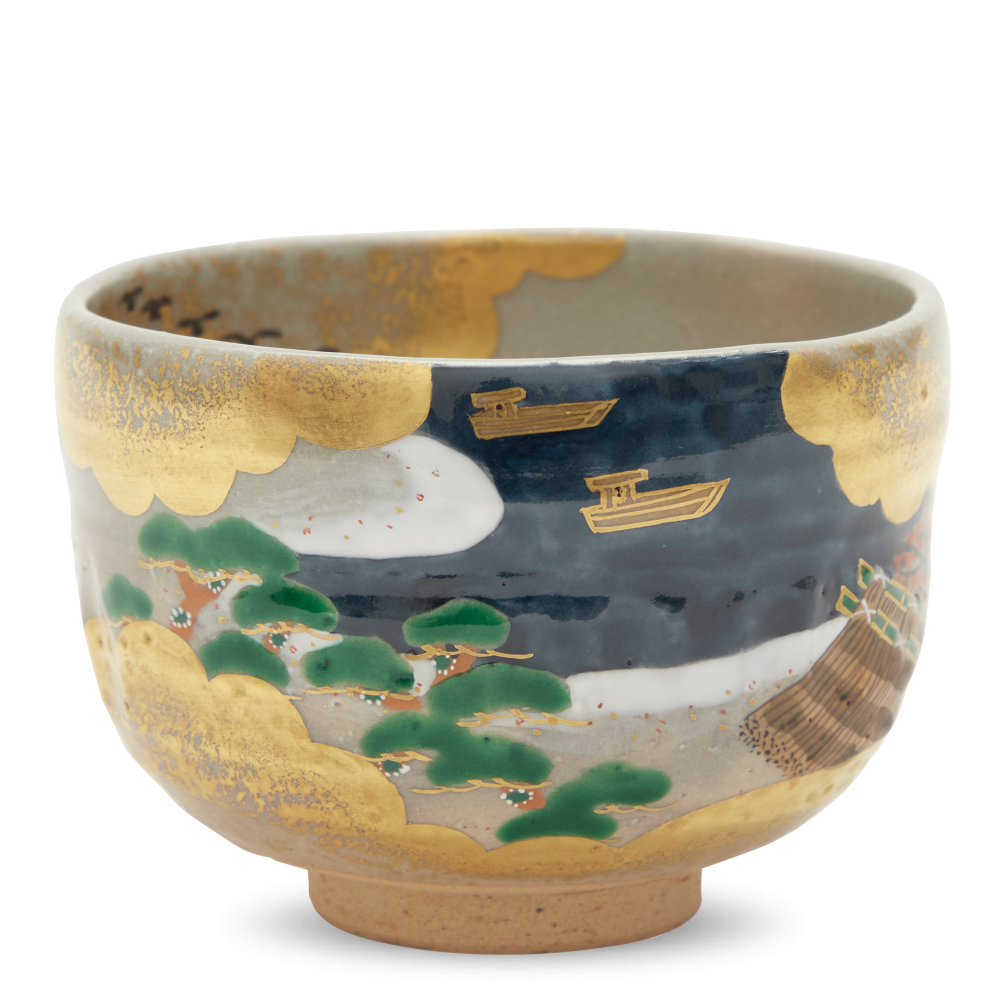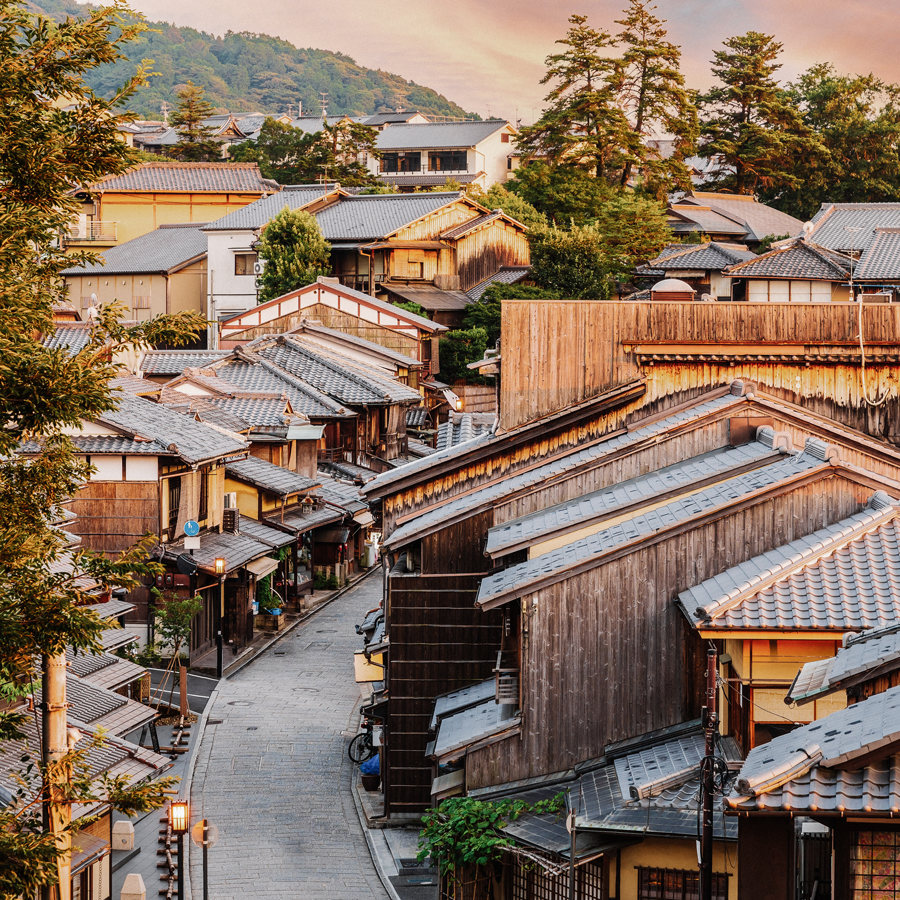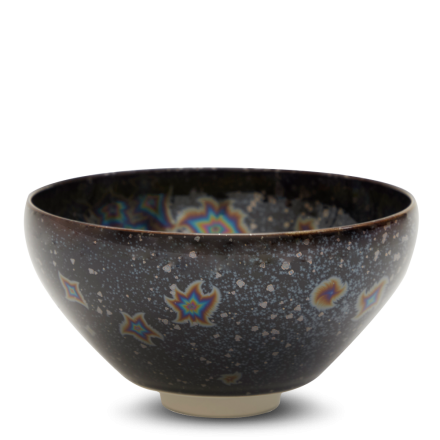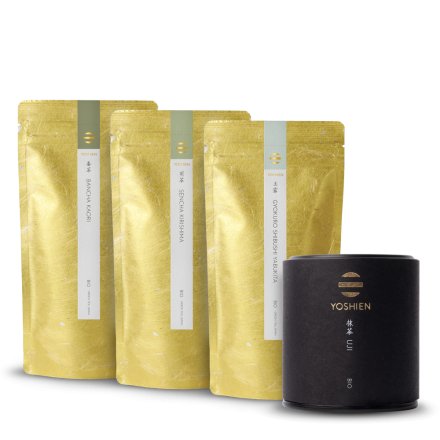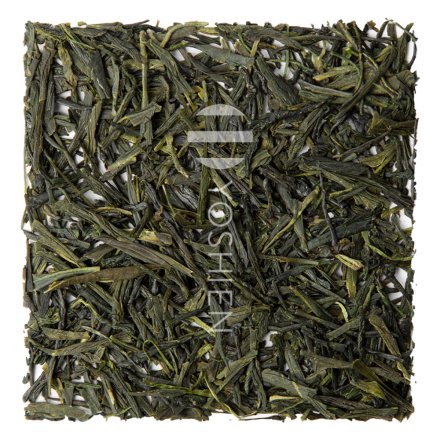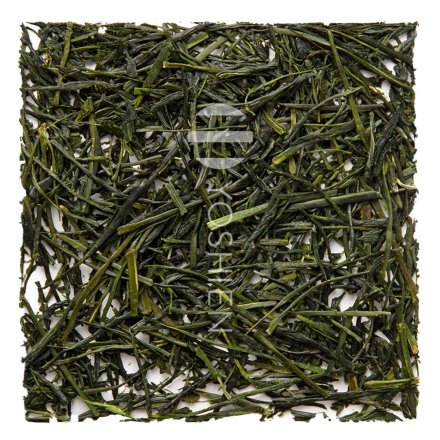Rinse in warm water before use. Wash gently by hand with warm water and a soft cloth or sponge after use, then dry thoroughly with a tea towel to prevent water marks. Do not put in dishwasher or microwave. Exposure to very high temperatures or rapid temperature changes may cause damage.
Matcha Bowl
Genji Monogatari Suma
Studio Zensho
SKU
0170
A small and charming Matcha Chawan in a classic Kiyomizu-yaki style, hand-painted with a scene from The Tale of Genji, where the titular character is exiled at the rural coastal town of Suma. Illuminated with gold, this bowl is perfect for tea ceremonies.
| Item | Chawan tea bowl |
| Style | Kyo-/Kiyomizu-yaki |
| Origin | Kyoto, Japan |
| Studio | Zensho 善昇窯 |
| Dimensions | Ø11 x 10.5cm |
| Material | Ceramic |
| Shape | Wan-nari (椀形) |
| Colour | Grey, gold, navy, green, orange |
| Stamp | Seal to base |
| Packaging | Signed wooden box (Tomobako) |
Each piece is handcrafted and unique, therefore finish and dimensions will vary slightly
Notify me when this product is available:
Reminder set



